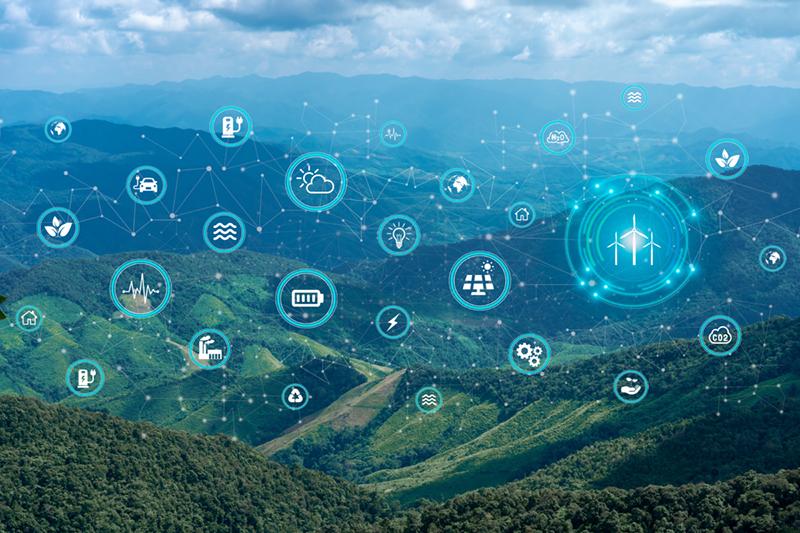
Climate Modeling and Prediction: planning for a Sustainable Future
Climate models make it possible to predict how the climate will change in the future and, when properly trained, also help to identify potential impacts in specific regions. This enables governments and communities to take measures to adapt to rapidly changing conditions.
Increasingly, these models are fed by open datasets, and some climate models have even begun to be published freely and openly. In this line, we find the climate models published on the MIT Climate portal or the data and models published by NOAA Climate.gov. In this way, all kinds of institutions, scientists and even citizens can contribute to identifying possibilities for mitigating the effects of climate change.
Carbon emissions monitoring: carbon footprint tracking
Thanks to open data and some paid-for datasets, it is now possible to accurately track the carbon emissions of countries, cities and even companies on an ongoing basis. As exemplified by the International Energy Agency's (IEA) World Energy Outlook 2022 or the U.S. Environmental Protection Agency's Global Greenhouse Gas Emissions Data, these data are essential not only for measuring and analyzing emissions globally, but also for assessing progress towards emission reduction targets.
Adapting Agriculture: cultivating a resilient future
It is clear that climate change has a direct impact on agriculture and that this impact threatens a global food security that in itself is already a global challenge. Open data on weather patterns, rainfall and temperatures, land use and fertilizer and pesticide use, coupled with local data captured in the field, allow farmers to adapt their practices and evolve towards a model of precision agriculture. Choosing crops that are resilient to changing conditions, and managing inputs more efficiently thanks to this data, is crucial to ensure that agriculture remains sustainable and productive in the new scenarios.
Among other organizations, the Food and Agriculture Organization of the United Nations (FAO) highlights the importance of open data in climate-smart agriculture and publishes datasets on pesticide use, inorganic fertilizers, greenhouse gas emissions, agricultural production, etc., which contribute to improved land, water and food security management.
Natural Disaster Response: minimizing Impact
The analysis of data on extreme weather events, such as hurricanes or floods, makes it possible to design strategies that lead to a faster and more effective response when these events occur. In this way, on the one hand, lives are saved and, on the other, the high impact on affected communities is partially mitigated.
Open data such as those published by the US National Hurricane Center (NHC) or the European Environment Agency are valuable tools in natural disaster management as they help streamline disaster preparedness decision-making and provide an objective basis for assessment and prioritization.
Biodiversity and conservation: protecting our natural wealth
While it seems clear that biodiversity is vital to the health of the Earth, human activity continues to put it under great pressure, combining with climate change to threaten its stability. Open data on species populations, deforestation and other ecological indicators such as those published by governments and organizations around the world in the Global Biodiversity Information Facility (GBIF) help us to identify areas at risk more quickly and accurately and thus prioritize conservation efforts.
With the increased availability of open data, governments, institutions, companies and citizens can make informed decisions to mitigate the consequences of climate change and work together towards a more sustainable future.
Content prepared by Jose Luis Marín, Senior Consultant in Data, Strategy, Innovation & Digitalization.
The contents and points of view reflected in this publication are the sole responsibility of its author.


